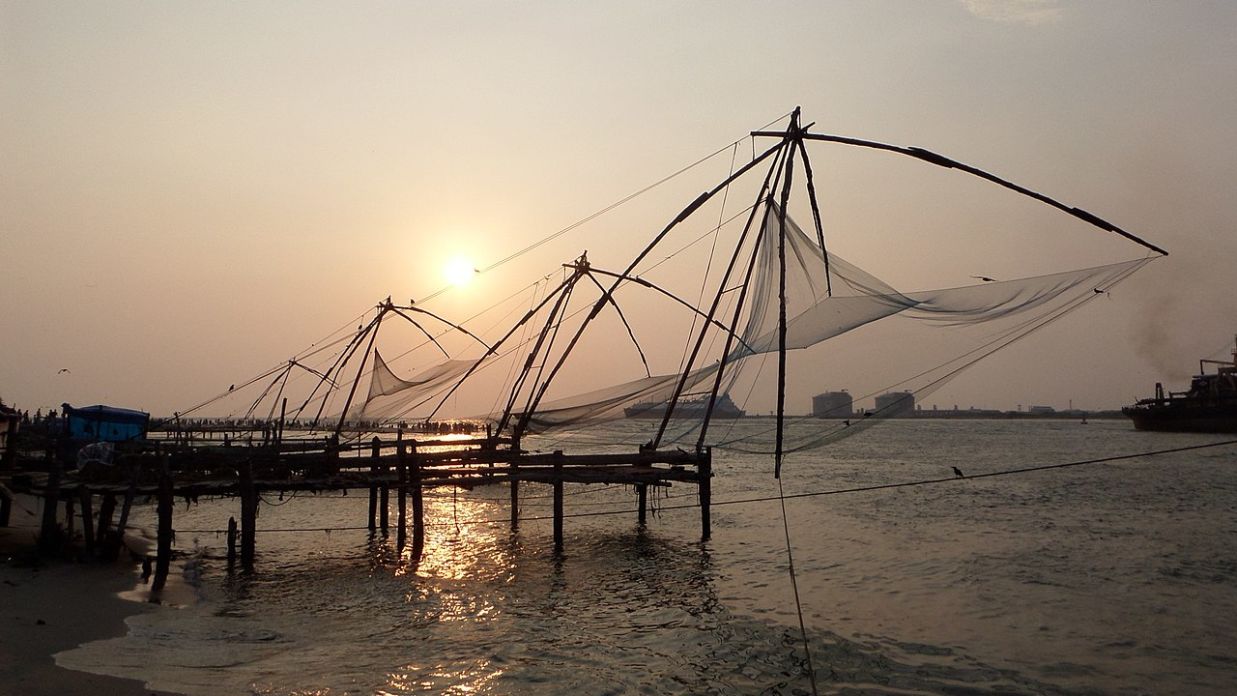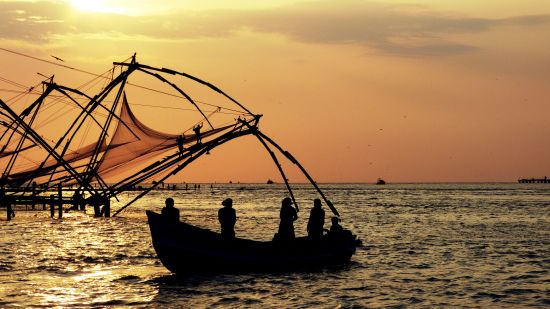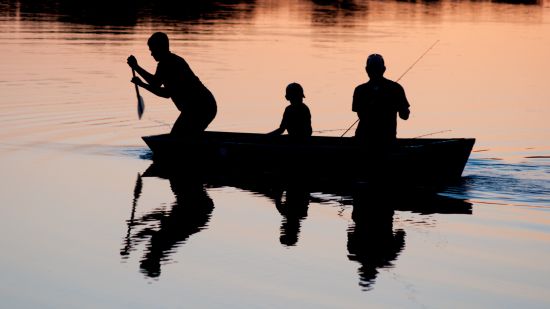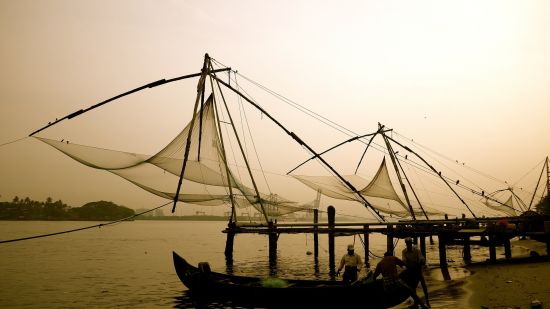History of the Chinese fishing nets, Kochi
The iconic Kochi fishing nets were introduced by the Chinese explorer Zheng He, from the court of the Kubla Khan, between the period of 1350 and 1450 AD. The nets, known as ‘cheenavala fishing nets’ in Malayalam, have been here long before historic structures such as the Taj Mahal, Statue of Liberty, and Eiffel Tower were built. Inexplicably, the Chinese Fishing Nets have become a signature part of the city’s identity. Today, of the 17 grand fishing nets, only 8 remain. Three of these nets are the biggest in the world, with four fishermen needed to pull it on every shift.

How to get the best view?
The picturesque view of the Chinese fishing nets, Kochi, is undeniably one of the most photographed scenes in the city. The nets, cantilevered to the sea against the silhouetted backdrop of the sky at dusk, is one of the most breathtaking sights to behold.
Vasco da Gama Square, which runs along Fort Kochi Beach, offers the best view of the Chinese Fishing Nets. Neemrana Tower House - 17th Century, Cochin, is one of the few hotels in Kochi that sits facing the Chinese fishing nets. Staying here would ensure that you can get a sight of the Chinese fishing nets, even during the wee hours where the fishermen operate them, from the comfort of your hotel.



Structure and function of Chinese fishing nets
The Chinese nets, formally known as "shore operated lift nets", is a kind of stationary lift net with fixed land installations that are used for fishing. The mammoth nets, each spread over an area of 20 metres, are attached to a cantilever which is further fixed to poles of teak-wood and bamboo on the beach. Lights are attached to the teak posts and suspended above the net to attract fish. To operate one fishing net, a team of at least four fishermen are needed at a time. Fishing is usually done in the morning and early evening. For first-timers, the subtle balancing of the net, the act of its descent into the water, and pulling it back, is an incredible sight to behold!